Comments
- No comments found
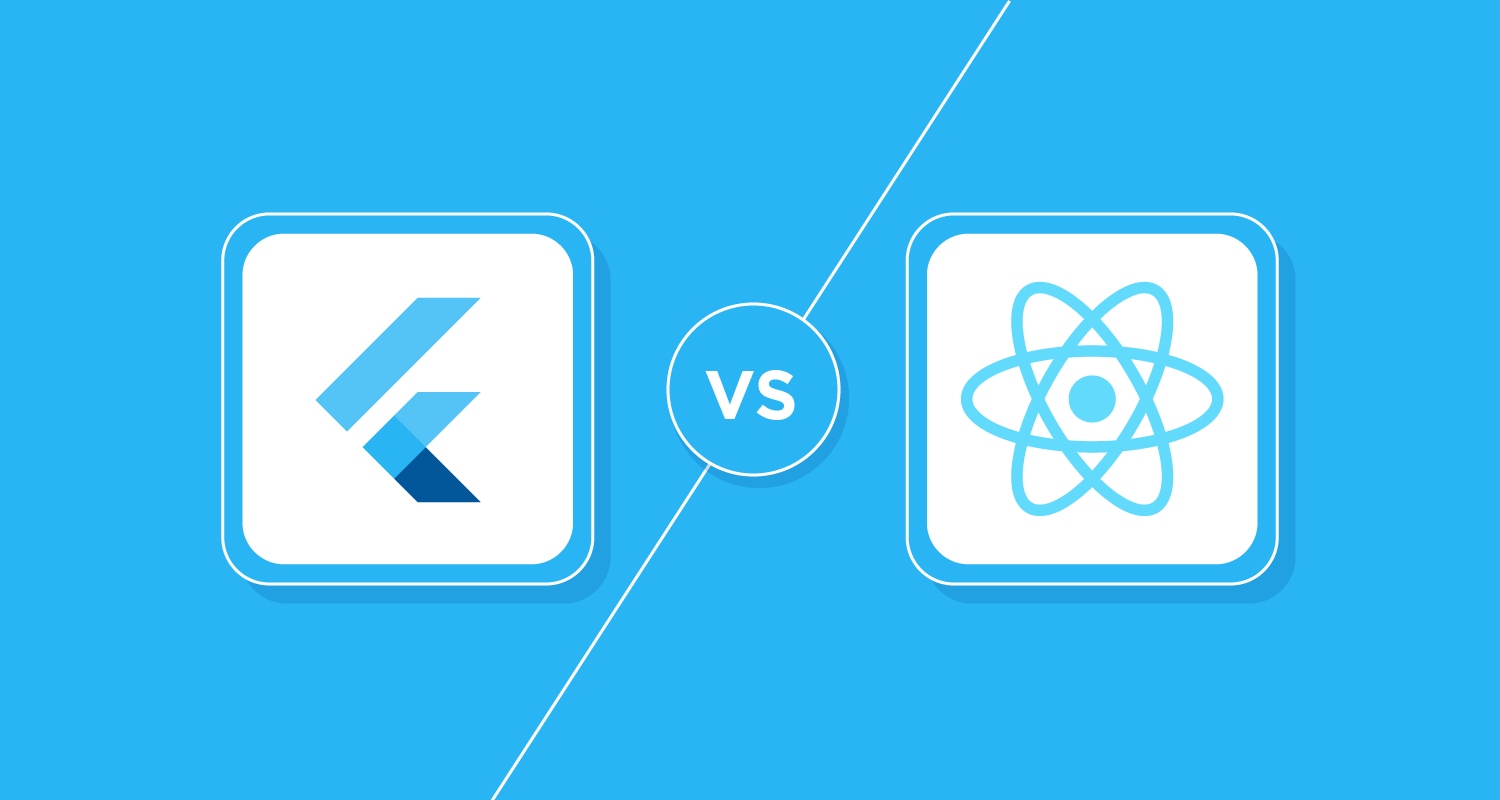
As technology advances, the need for more features and increased performance in apps becomes a key element in their success.
Choosing the right framework for mobile app development is essential, and in 2024, that decision is more important than ever. This article compares Flutter vs. React Native based on their programming languages, design techniques, community support and more.

Here, we will look at the technical differences between Flutter and React Native.
Flutter uses Dart, a programming language developed by Google. It was designed to create high-performance, scalable applications for multiple platforms using a single code base. The framework is object-oriented, easy to learn for developers with Java or C# experience, and designed for user interface development.
React Native uses JavaScript. It is one of the most popular and adaptable programming languages. As JavaScript is widely used in web development, React Native is especially accessible to a wide range of developers, including those moving from web to mobile app development.
Flutter employs a reactive development architecture, encouraging a unified and consistent coding approach. This framework is notable for its extensive widget libraries that promote a component-driven development model. React Native adopts a slightly different approach, emphasizing native components' utilization to achieve a near-native performance and look.
A critical aspect of mobile app development is how efficiently the application runs on devices. Flutter's approach, compiling directly to native ARM code for both Android and iOS, ensures optimal performance and responsiveness. This direct compilation process enables Flutter apps to run smoothly, with consistent frame rates across different platforms.
React Native operates differently, using a bridge to communicate between the JavaScript code and the native platform. While this can introduce some performance overhead, especially in complex or heavy animation scenarios, React Native still performs adequately for most applications. However, developers may need to optimize their code more meticulously for React Native to achieve similar levels of performance efficiency as seen in Flutter apps.
Because JavaScript is so widely used, React Native has access to a larger pool of developers familiar with the language. Flutter continues to grow in popularity. Dart has a smaller development base due to its niche position in the programming environment.
Application performance has a direct impact on user satisfaction. Flutter is known for its excellent performance due to the Dart language's ability to compile into native code. This results in smooth animations and responsive interfaces. While React Native is remarkably fast, it may have some limitations, especially when dealing with complicated animations or heavy computation.
Both frameworks boast supportive communities, but the scale and engagement levels differ significantly.
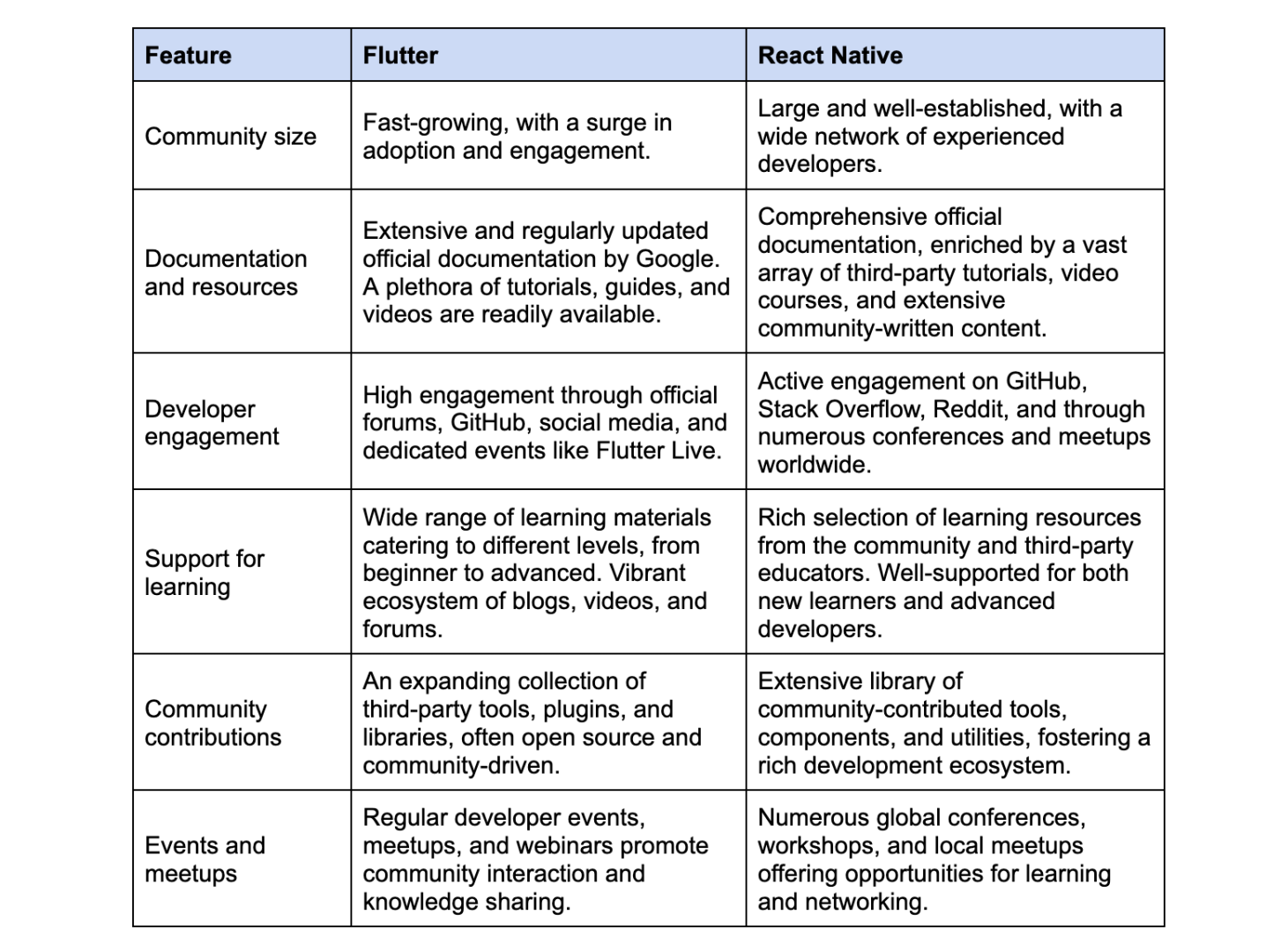
Both frameworks offer robust cross-platform development capabilities, yet their approaches and execution differ:
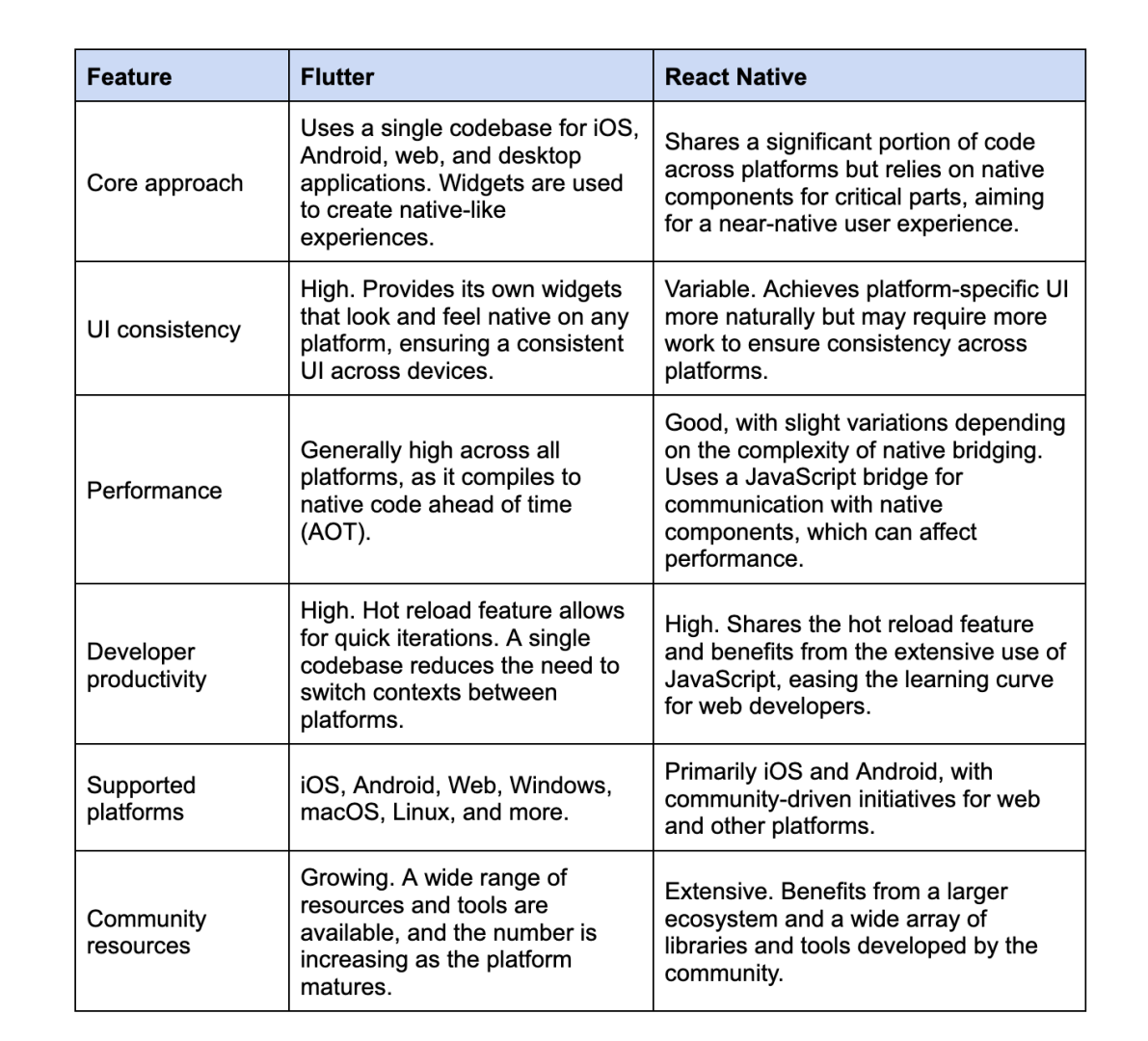
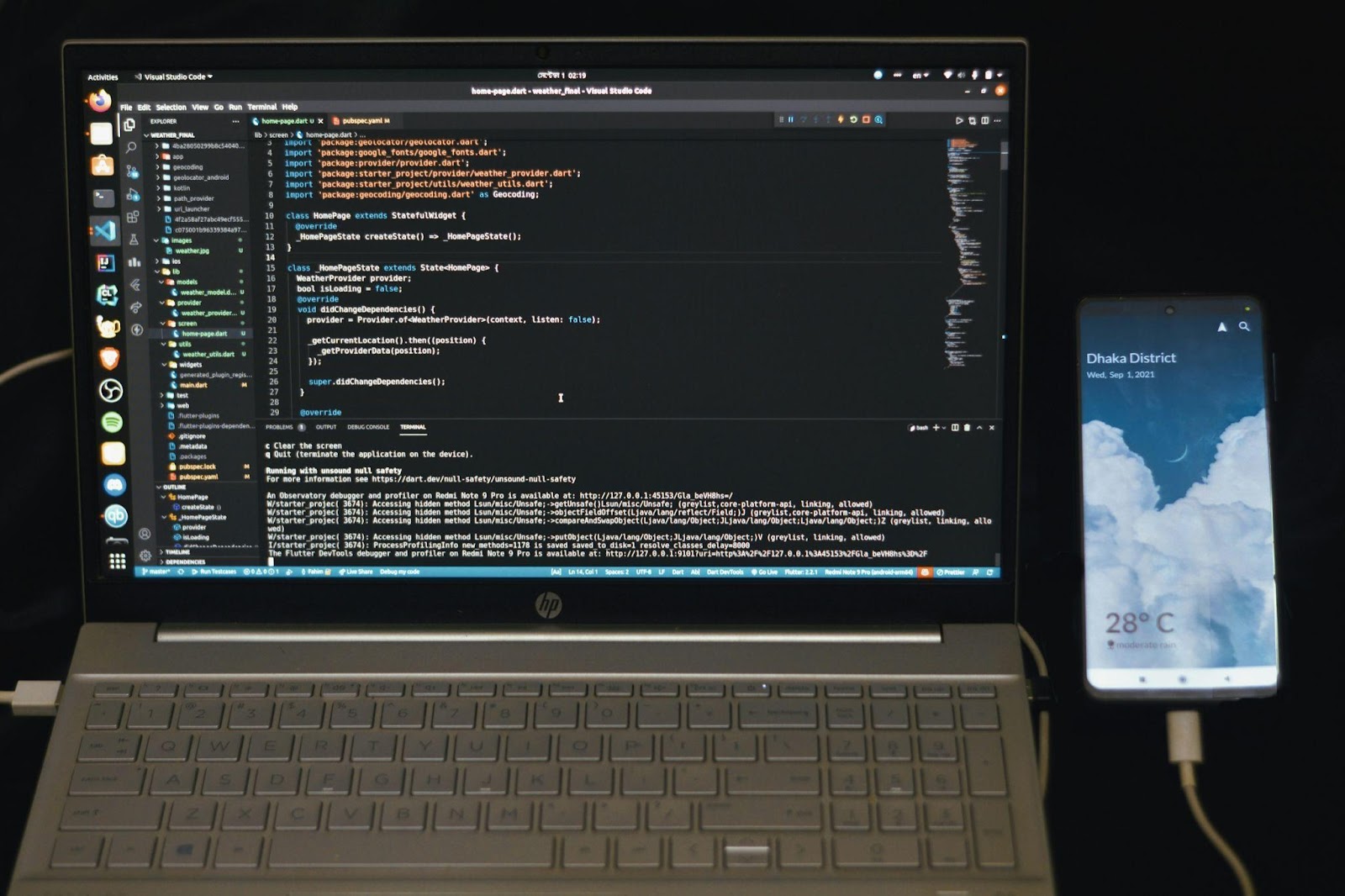
The development speed and associated costs are influenced by various factors, including the framework's learning curve, available libraries, and development tools. Generally, React Native projects can be quicker to start due to the widespread familiarity with JavaScript. However, Flutter's comprehensive widget library and the ease of creating a consistent UI across platforms can reduce mobile app development time and costs in more complex projects.
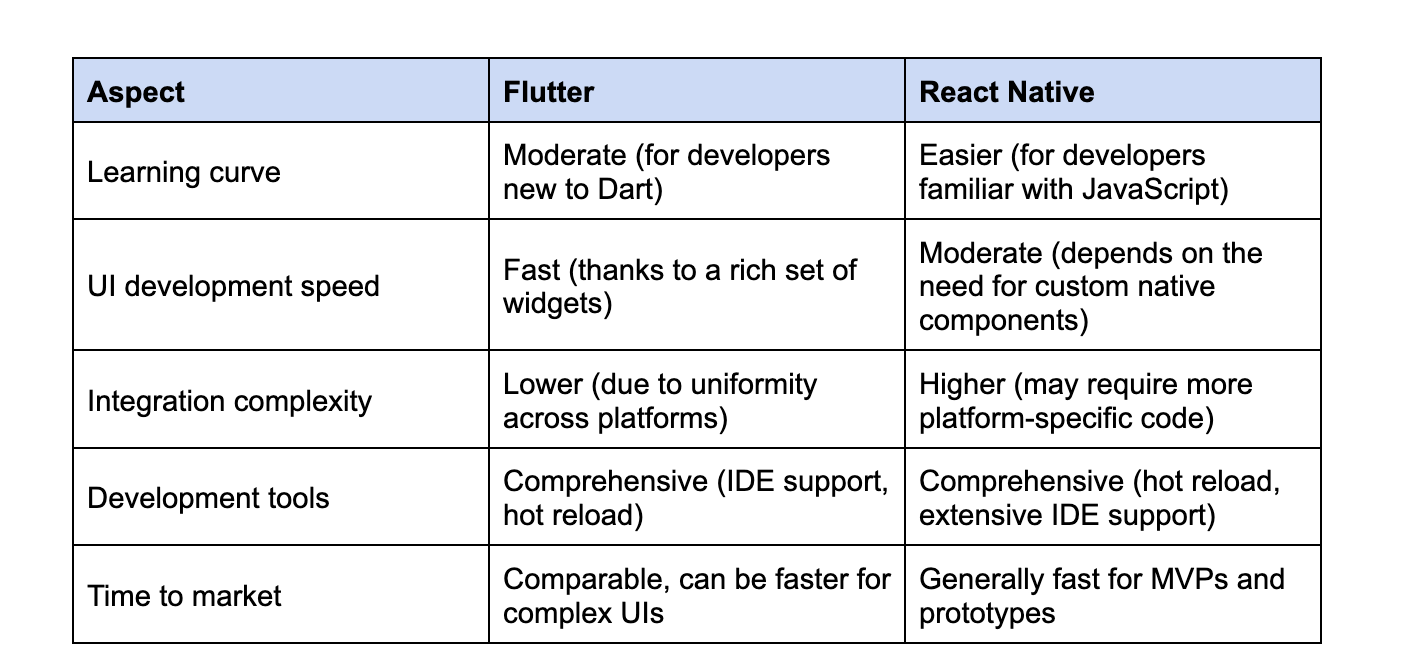
It is difficult to say the exact cost of developing applications with these frameworks. The cost can vary significantly based on the project's specific requirements, the development team's location, and market rates at the time of mobile app development. Below we present a table with approximate costs that will serve as a guideline for you.
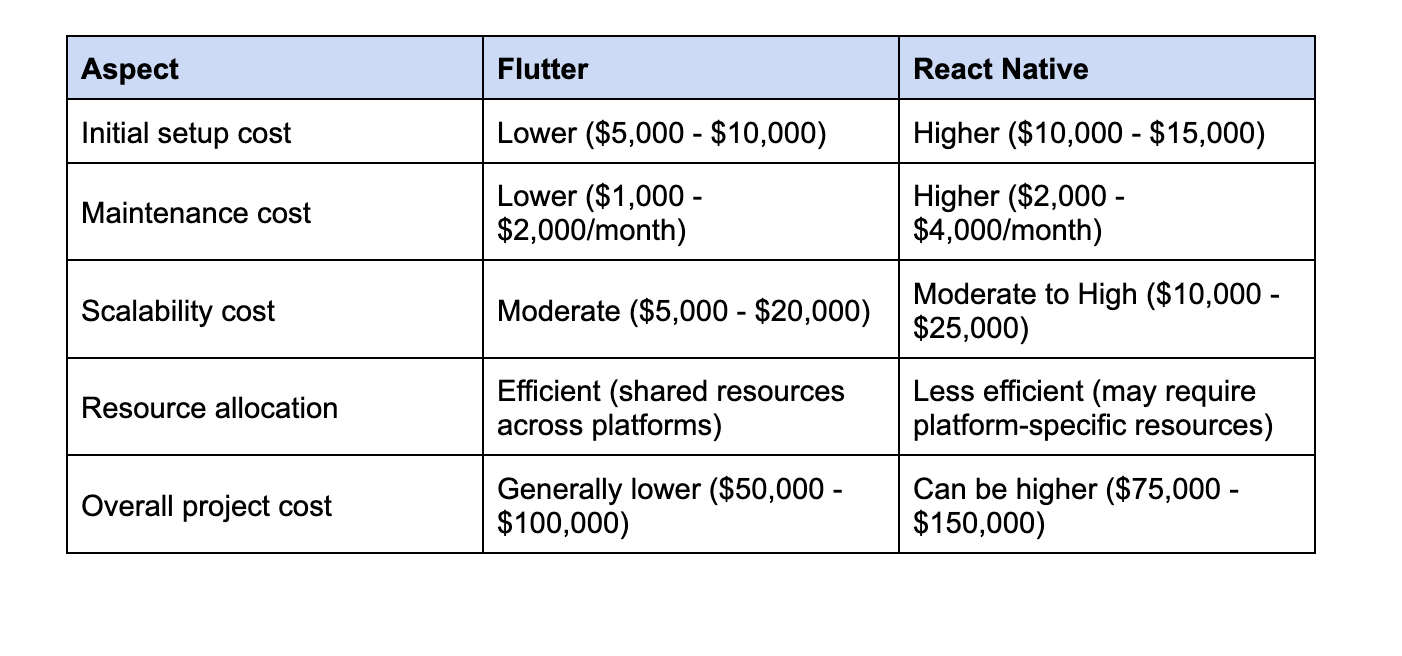

We’ll consider applications that have leveraged Flutter and React Native. These examples highlight how businesses and developers have utilized the unique strengths of each framework to build high-quality, effective mobile applications.
The app is a good example of how Flutter enables cross-platform mobile app development. It allows clients to manage their advertising campaigns on the move. The app allows you to examine statistics, update budgets, and get notifications. This app demonstrates Flutter's ability to handle sophisticated, data-driven apps effectively, with features like smooth UI and consistent performance across devices.
The Xianyu app demonstrates Flutter's capability to create compelling e-commerce experiences. This app for buying and selling secondhand goods benefits from Flutter's performance and sophisticated animations, ensuring a flawless shopping experience for millions of customers. Alibaba's development team was able to speed up the process by using Flutter. This resulted in a more unified and attractive user interface for both iOS and Android customers.
The originator of React Native incorporates the framework within its own flagship app. This approach highlights React Native's ability to simplify the mobile app development process by sharing code across iOS and Android platforms. This helps to keep the user interface consistent and reduces development time. Facebook's usage of React Native demonstrates its effectiveness in developing sophisticated applications that must run seamlessly across several platforms.
While Airbnb has phased out React Native, its initial use provided significant insights into the framework's potential. React Native enabled the app to quickly roll out new features and improve the performance. The transition period with React Native highlighted how it could aid in achieving a balance between development efficiency and a high-quality user experience.
In 2024, the decision between Flutter and React Native will be based on individual project criteria such as desired user experience, development timeframe, and available developer capabilities. Flutter excels for projects that require a consistent, brand-centric UI across platforms, whereas React Native is better suited for apps that seek a native look and feel with faster iterations that leverage existing JavaScript experience.
Developers and enterprises should explore further into each framework's capabilities, matching their project objectives to the strengths of Flutter or React Native. This exploration will have an impact not just on a project's success, but also on its maintainability and scalability.
Felix is the founder of Society of Speed, an automotive journal covering the unique lifestyle of supercar owners. Alongside automotive journalism, Felix recently graduated from university with a finance degree and enjoys helping students and other young founders grow their projects.
Leave your comments
Post comment as a guest